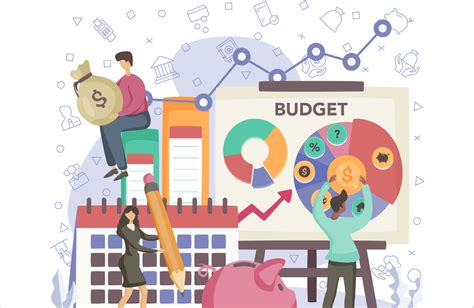Navigating the Landscape of Personal Debt Among 30-40 Year Old Men
The question of what percentage of men aged 30-40 carry more than $20,000 in personal debt, excluding mortgages, touches upon a critical aspect of modern financial health. This demographic often finds itself at a pivotal life stage, balancing career establishment, potential family growth, and the lingering financial commitments from earlier life. Personal debt, in this context, typically refers to credit card balances, auto loans, student loans, and other unsecured loans, all of which can accumulate rapidly.
While a precise, up-to-the-minute figure for this exact demographic slice is challenging to pinpoint from publicly available reports, we can examine broader trends and data to construct a comprehensive understanding of the situation. Financial well-being in this age group significantly impacts future savings, investment potential, and overall economic stability.

The Data Challenge: Pinpointing Specific Demographics
Obtaining an exact percentage for such a specific query is difficult because official financial reports, such as those from the Federal Reserve, typically aggregate data across broader age ranges or demographics. While they provide invaluable insights into overall consumer debt, segmenting it precisely by gender, a narrow 10-year age bracket, and a specific debt threshold (more than $20,000 excluding mortgages) requires granular survey data that isn’t routinely published.
Furthermore, debt levels are dynamic. They fluctuate with economic conditions, individual income changes, and spending habits. Relying on general trends, however, allows us to infer a reasonable picture of the financial pressures this group faces.
Common Debt Categories Beyond Mortgages
For men in their 30s and early 40s, several types of non-mortgage debt commonly contribute to significant balances:
- Student Loans: Many individuals in this age group are still paying off substantial student loan debt incurred during their higher education.
- Credit Card Debt: Used for everyday expenses, emergencies, or lifestyle purchases, credit card balances can quickly exceed five figures, especially with high interest rates.
- Auto Loans: Car payments for newer vehicles often represent a significant monthly expense and a sizable debt principal.
- Personal Loans: These can be taken out for various reasons, including debt consolidation, home improvements, or other major purchases.

Estimating the Prevalence: What General Trends Suggest
While precise statistics remain elusive, various reports indicate that a substantial portion of adults, particularly those in their 30s and 40s, carry significant non-mortgage debt. For instance, data from the Federal Reserve often shows average consumer debt balances (excluding mortgages) that, when combined across categories like student loans and credit cards, can easily exceed $20,000 for many individuals. Younger generations have notably higher student loan balances than previous generations, and credit card debt has seen consistent increases.
Given that many individuals enter this age bracket with existing student loan debt, and then add auto loans and potentially accumulating credit card balances, it is reasonable to infer that a significant minority, if not a substantial portion, of men aged 30-40 would report having more than $20,000 in personal debt, excluding mortgages. While not a definitive percentage, it underscores a widespread financial reality for this demographic.

Factors Contributing to Debt in This Age Group
Several factors contribute to the accumulation of debt for men in their 30s and 40s:
- Career Investment: Investing in education or career development can lead to student loans, which are long-term commitments.
- Family Formation: Costs associated with starting a family, raising children, and furnishing a home can lead to credit card or personal loan debt.
- Lifestyle Inflation: As incomes rise, so too can spending habits, leading to increased discretionary spending financed by credit.
- Lack of Financial Literacy: Insufficient understanding of budgeting, interest rates, and debt repayment strategies can exacerbate debt problems.
The Impact of Significant Personal Debt
Carrying more than $20,000 in non-mortgage debt can have profound impacts, including increased financial stress, limitations on achieving other financial goals like saving for retirement or a down payment on a home, and potential negative effects on credit scores. It can also create a cycle where individuals rely on credit to cover living expenses, further deepening their debt.

Strategies for Managing and Reducing Debt
For those in this age bracket facing substantial personal debt, proactive management is key:
- Create a Detailed Budget: Understand exactly where money is going and identify areas for cutbacks.
- Prioritize High-Interest Debt: Focus on paying off credit cards or personal loans with the highest interest rates first (the “debt snowball” or “debt avalanche” methods).
- Consider Debt Consolidation: A personal loan or balance transfer credit card with a lower interest rate can simplify payments and reduce overall interest paid.
- Increase Income or Reduce Spending: Explore options for a side hustle or critically evaluate non-essential expenses.
- Seek Professional Advice: A financial advisor or credit counselor can provide personalized strategies and support.

Conclusion: Understanding the Broader Picture
While an exact percentage for men aged 30-40 with over $20,000 in non-mortgage debt remains challenging to pinpoint precisely, general financial trends and consumer debt statistics strongly suggest that a significant portion of this demographic carries substantial personal debt. The presence of student loans, credit card balances, and auto loans often pushes total non-mortgage debt well over this threshold. This highlights the importance of financial literacy, diligent budgeting, and proactive debt management strategies for individuals in this critical stage of life to build a secure financial future.




